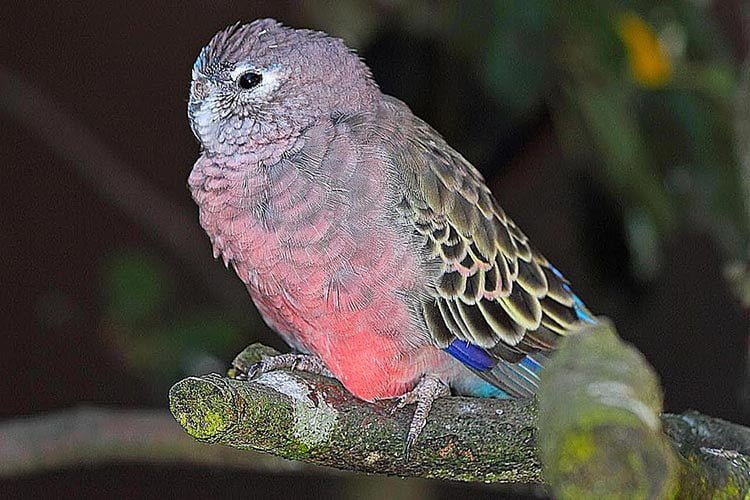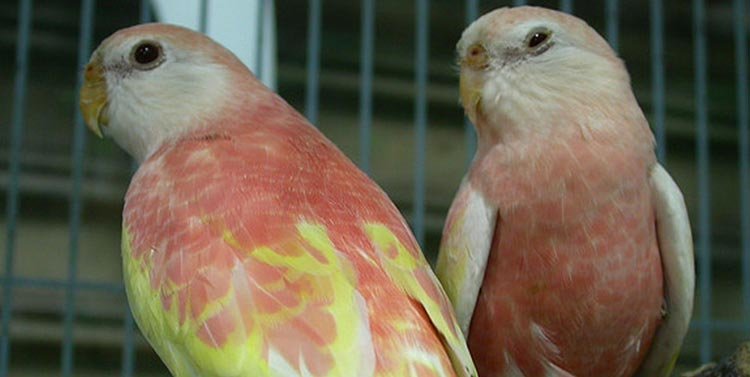
Where does the Bourke’s parakeet live?
The Bourke’s parakeet, also known as Bourke’s parrot (Neopsephotus bourkii, formerly known as Neophema bourkii), is a bird that lives in the central and southern regions of Australia, where it usually lives in the savannah, in areas where there are eucalyptus trees. This bird uses that tree to refuge during certain hours of the day.
A few years ago, the species was in danger of extinction due to the large reduction of natural habitats by farms. Because of this, the Australian Government decided to stop this situation to ensure that the species could continue to thrive. The status of the species is currently at normal values.
Why is this parakeet so striking?
The Bourke’s parakeet is a bird everyone would like to have at home. Its size is around 21 – 23 cm, although the size of those who live in freedom is somewhat smaller. In addition, females are smaller, which is a sign of sexual dimorphism when trying to reproduce.
The adult male has on the nape of the neck, the back, and the shoulders small inner covers of an earthy brown color. The back of head and forehead have a dark pink tone, and the feathers are a bit darker. The scapulars have a greenish-yellow border, and the rumps are a little darker than those on the back, and dotted with a pale blue hue.
Above the beak, there is a 4 mm band, over the light blue beak, which is not present in the younger birds. The female is not only smaller than the male, as the cranial vault is flatter, and the blue band in the beak area is whitish, not so blue. On the other hand, the colors of the female are usually duller than those of the male.
Due to the human intervention, in order to perpetuate the species and achieve new specimens, it has four mutations:
- Isabel Bourke Parakeet: Due to a dilution of the melanin, the color of her eye is a plum-red tone, something that is more noticeable in females.
- Fallow Bourke Parakeet: The dilution is 50% and your eyes are a bright red color.
- Yellow Bourke Parakeet: The melanin is diluted by 75%, and the pink lipochrome is affected and seems to be yellow.
- Rosy Bourke Parakeet: It is also known as Pink Bourke. The chest, abdomen, nape, and back are intense pink. The cheeks and throat are light gray. Males have a white line on the forehead and black eyes.

How to take care of a Bourke’s parakeet?
If you want to have more than one of these birds, the cage will have to be 2 x 1 x 2.5 meters. A Bourke parakeet loves to move and fly around. It has to be located in a place where there are no air streams, and protected from humidity and sunshine all day long, or at least have a shelter where you can hide when it is higher.
One of the characteristics of the Bourke parakeet is that it is a peaceful bird. With this bird, there will be no problem when it comes to living with other species. Their diet is made up of seeds: two portions of canary seed, two portions of white millet, one portion of yellow millet and some peeled oats. Two or three times a week, you may give it sunflower seeds. During winter, it is better to feed them with a little cane seed, only occasionally.
Reproduction is quite simple. You do not have to do many things so that a couple of Bourke parakeets have breeding. However, it will be necessary to wait until the offspring are at least one month old to separate them from their parents and move them to another cage.
